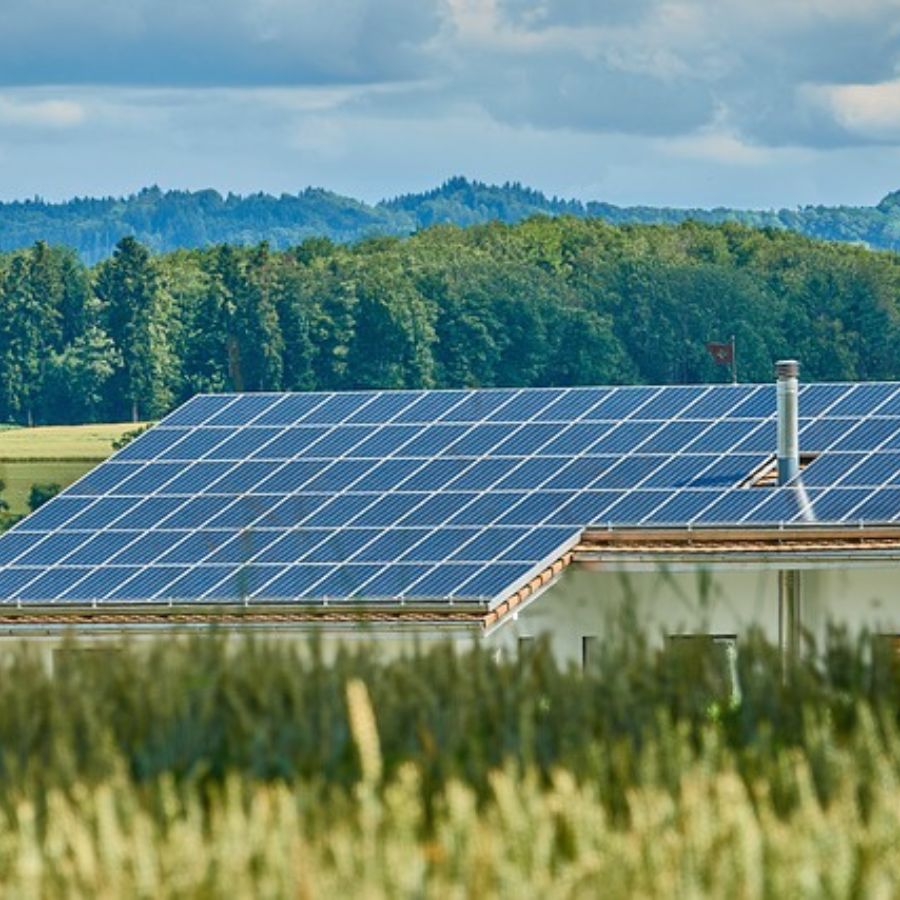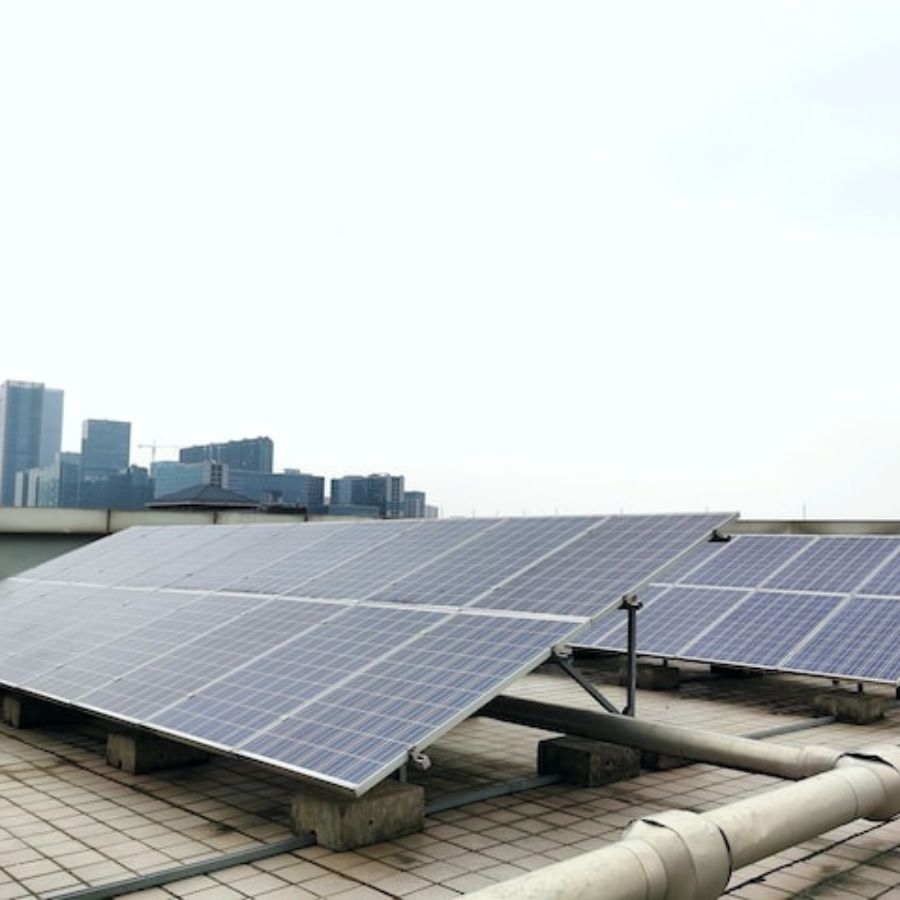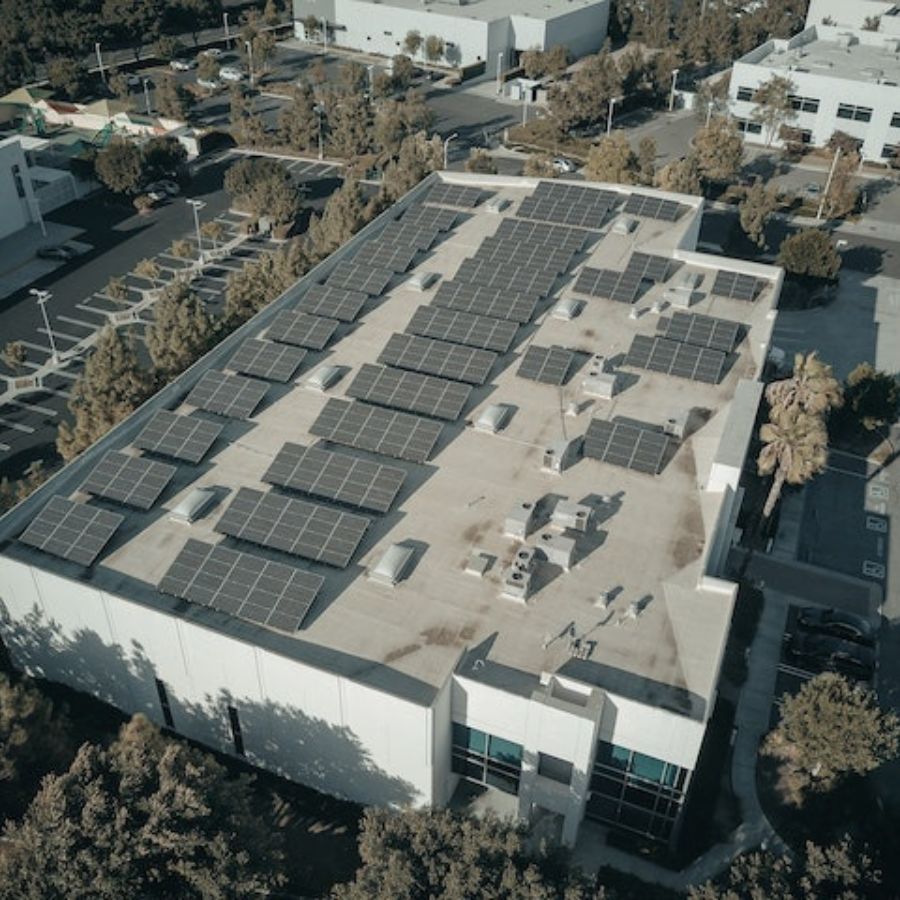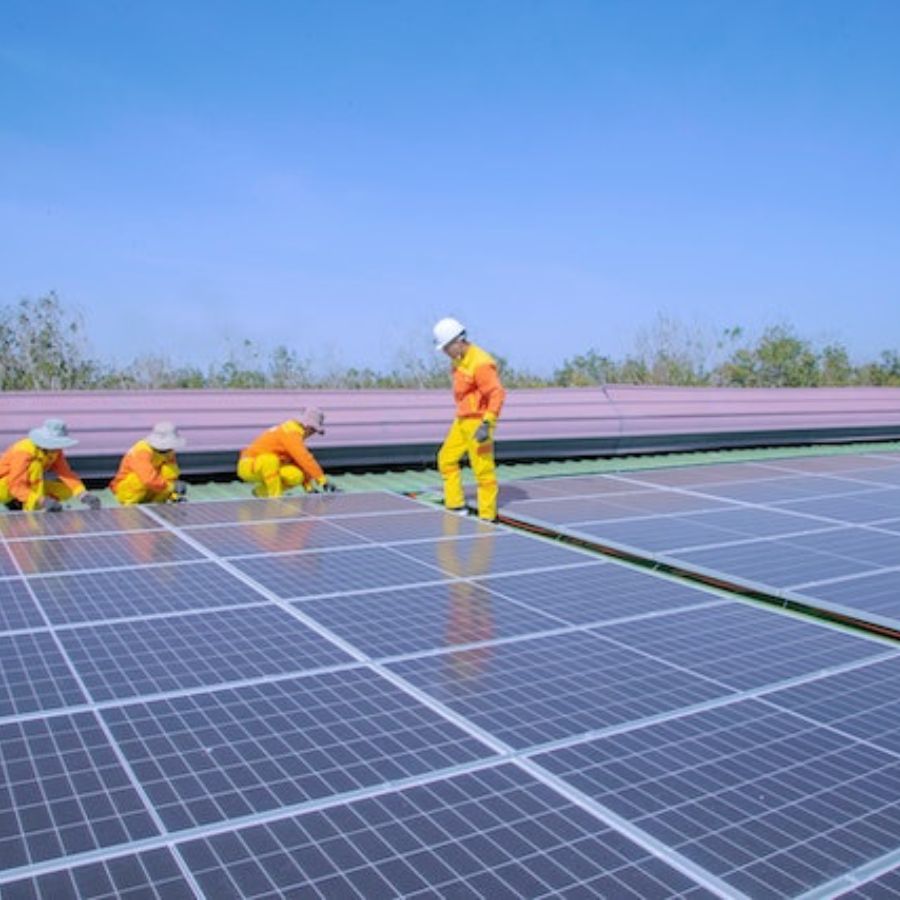In today’s environmentally conscious world, harnessing solar energy has become increasingly popular. It is a viable option for homeowners seeking sustainable and cost-effective power solutions.
Solar panels, the critical components of a solar energy system, have proven to be an excellent means of generating clean electricity. However, determining the number of solar panels required to meet specific energy needs can be complex.
If you’ve been pondering the question, “How many solar panels do I need for 2000 kWh per month?” this article aims to shed light on the subject. Furthermore, it will guide you toward an informed decision.
By understanding the factors that influence the figure of solar panels, you can determine the optimal number of necessary solar panels to achieve your desired energy output. Those factors include solar system size, peak sun hours, and energy consumption.
So, let’s delve into the intricacies of solar power and uncover the formula to determine the number of solar panels you’ll need to generate 2000 kWh of electricity each month.
Understanding Solar Panel Efficiency

Solar panel efficiency refers to the ability of solar panels to convert sunlight into usable electricity. Therefore, it is essential to consider how many solar panels are needed to generate a specific amount of energy.
Solar system efficiency is usually expressed as a percentage, representing the portion of sunlight that a panel can convert into electricity.
Factors affecting solar panel efficiency
Sunlight Availability
The amount of sunlight available in a particular location plays a significant role in the efficiency of solar panels.
Regions with higher solar irradiance and longer peak sun hours have more energy available for conversion, allowing solar panels to operate at higher efficiencies.
In Canada, solar system efficiency can vary depending on the geographical location due to variations in sunlight intensity throughout the year.
Panel Orientation and Tilt
The orientation and tilt angle of solar panels affect their exposure to sunlight. Therefore, solar panels should ideally orient towards the south (in the Northern Hemisphere). In addition, they should be at an angle that captures the most sunlight throughout the day and the year. It helps to maximize energy production.
Proper orientation and tilt can significantly increase the efficiency of solar panels and optimize their performance.
Shading and Obstructions
Solar panels produce electricity through sunlight. Therefore, shading from nearby structures, trees, or other objects can reduce the efficiency of solar panels by blocking or partially blocking sunlight.
Even a small amount of shading on solar panels can significantly impact its energy production. Therefore, it is crucial to ensure that solar panels are in locations free from obstructions. It helps to maximize their efficiency and minimize potential energy loss.
Temperature
Temperature can affect the performance and efficiency of solar panels. Solar panels generally operate more efficiently at lower temperatures. Conversely, as temperatures rise, the efficiency of solar panels can decrease, leading to a slight reduction in energy production.
However, it’s important to note that the reduction in efficiency due to temperature is generally minimal. Therefore, it is often accounted for in the manufacturer’s specifications.
Calculation of Effective Solar Panel Efficiency
One needs to consider various factors to calculate the effective solar panel and solar system efficiency. The efficiency rating manufacturers provide typically depends on Standard Test Conditions (STC), which assume ideal laboratory conditions.
However, real-world conditions differ, and one must consider several derating factors. First, it helps to estimate the actual efficiency of solar panels.
Derating factors account for losses due to factors such as temperature variations, wiring losses, dust accumulation, and system inefficiencies.
You can obtain practical or actual efficiency by multiplying the solar panel’s STC efficiency with the derating factor. The effective efficiency reflects the real-world performance of the solar panel in converting sunlight into electricity.
Understanding the efficiency of solar panels and the factors influencing them is crucial. In addition, it helps determine the number of solar panels needed to generate a specific amount of energy.
By considering sunlight availability, solar panels orientation and tilt, shading and obstructions, and temperature, one can accurately calculate the practical efficiency of solar panels. You can determine the appropriate solar system size or the number of solar panels required to achieve a target energy output.
Determining Energy Consumption
Average Household Energy Consumption in Canada
To accurately estimate how many solar panels are needed to generate 2000 kWh per month, it’s essential to understand the average household energy consumption in Canada.
According to data from the National Renewable Energy Laboratory (NREL), the average Canadian household consumes around 11,135 kWh of electricity annually. Dividing this by 12 gives an average monthly consumption of approximately 928 kWh.
Estimating Monthly Energy Usage
To estimate your monthly energy usage, you can start by reviewing your electricity bills from the past year. First, look for each bill’s monthly kilowatt-hour (kWh) usage.
Sum up the 12 months and divide by 12 to calculate your average monthly energy usage. It will give you a good baseline to work with.
Alternatively, you can use estimates based on average household consumption patterns if you need access to past electricity bills. However, remember that actual usage can vary. That depends on factors such as the size of your home, the number of occupants, the use of energy-intensive appliances, and climate conditions in your area.
Conversion From Energy Usage to Kilowatt-Hours (Kwh)
Energy consumption is typically kilowatt-hours (kWh), representing the energy used over a specific period.
To convert your energy consumption from other units (such as watt-hours or megajoules) to kilowatt-hours, divide the total energy by 1000. For example, if your energy consumption is in watt-hours, divide it by 1000 to convert it to kilowatt-hours.
Seasonal Variations in Energy Consumption
It’s important to consider seasonal variations in energy consumption when determining the number of solar panels needed for a specific energy target.
In Canada, energy consumption tends to be higher during winter due to increased heating requirements, particularly in regions with colder climates.
Conversely, energy usage may decrease during milder months when heating and cooling demands reduce. Therefore, it can impact the requirement for solar panels.
Calculating the average monthly energy consumption over a year is recommended to account for these seasonal variations.
This approach provides a more comprehensive understanding of your energy needs. In addition, it ensures that the solar panels and system size meet your energy requirements throughout the year. Not just during specific months.
Case Study – Calculating the Number of Solar Panels
Let’s do some calculations to help answer the question: “How many solar panels do I need for 2000 kWh per month?”
Example Calculation for a Typical Canadian Household
Let’s consider a case study to determine how many solar panels a typical Canadian household would need to generate 2000 kWh per month. Of course, energy requirements vary based on location, household size, and consumption patterns. This calculation will serve as a general example.
Assumptions and Data Sources Used
For this calculation, we will assume the following:
Average Solar Panel Efficiency
We’ll consider an average solar panels efficiency of 18%, which is a reasonable estimate for modern photovoltaic panels.
Peak Sun Hours
We will use the average peak sun hours per day in your location. You can find this information from local meteorological data or solar resource maps specific to your region. It will let you calculate the required amount of solar panels.
Energy Consumption
We aim to generate 2000 kWh per month from solar power. But, of course, that depends on the average household energy consumption of 928 kWh per month mentioned earlier.
Step-By-Step Calculation Process
Determine the Required Energy Production per Day
Divide the target monthly energy production (2000 kWh) by the average number of days in a month. It helps to find the daily energy production requirement for solar panels estimation. This calculation is necessary to size the solar system appropriately.
Calculate the Daily Energy Production per Solar Panel
Divide the required daily energy production by the average number of peak sun hours daily. You obtain the energy production per hour. Then, divide this value by the solar panel efficiency to determine the energy production per solar panel per hour.
Calculate the Number of Solar Panels Needed
Divide the daily energy production per solar panel by the energy production per solar panel per hour. It is a way to find the number of solar panels needed.
Interpretation of the Results
Once the calculations are complete, the obtained value represents the approximate number of solar panels needed to generate the desired energy output. It’s important to note that this calculation provides an estimation and may require adjustments. For example, they can depend on specific factors such as shading, panel orientation, and available roof space.
Following this step-by-step calculation, you can determine the number of solar panels needed to generate 2000 kWh per month for a typical Canadian household. Remember to consider local variables, such as the solar resource availability in your area. It helps to fine-tune the sizing of your solar system.
It’s recommendable to consult with a professional solar installer who can conduct a site assessment and provide more accurate calculations tailored to your specific needs. Additionally, they can offer guidance on equipment selection. Also, on optimal panel placement and other important considerations to maximize the efficiency and effectiveness of your solar system.
Conclusion
Accurately estimating the number of solar panels needed is crucial for optimal solar panels installation. Underestimating the number of panels may result in an insufficient solar system that cannot meet your energy needs. It does that, while overestimating can lead to unnecessary expenses. A precise calculation ensures that your solar system is its appropriate size. It helps produce the desired energy and maximize your return on investment.
It is highly recommendable to seek professional advice and conduct site assessments to determine the exact number of solar panels needed for your specific circumstances. Solar installers have the expertise and knowledge to assess available roof space, shading issues, and local solar resource availability. They can provide tailored recommendations on the optimal solar panel wattage, the number of solar panels, and the overall size of the solar system to meet your energy requirements efficiently.
By consulting with professionals and conducting site assessments, you can ensure that your solar panel installation is accurate and efficient. As a result, it maximizes the benefits of solar power. In addition, investing in an appropriately sized solar system will help you generate the desired energy and contribute to a greener and more sustainable future.




Leave a Reply